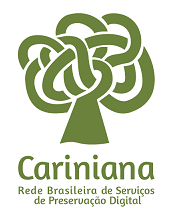Modernity, science and memory through literature: the information in the narrative structure of Dracula, by Bram Stoker
DOI:
https://doi.org/10.5433/1981-8920.2018v23n3p260Keywords:
Information, Dracula, Bram Stoker, Memory, LibraryAbstract
Introduction: This paper interprets the novel Dracula, by Bram Stoker, identifying points of interest for the study of information. In addition, it is shown how the era described in the book prepares and announces what is called currently the Information Age. Objective: Analyze procedures of ordering and appropriation of information, as essential elements in the narrative structure of the novel Dracula, by Bram Stoker. Methodology: This is a bibliographical research, an effort of interpretation of the fictional work, questioning in essayistic and argumentative way about the relevance of the information in the book. Results: Through the examination of the representation of Library, the opposition between modernity (scientific) and the past (superstitious) and of the action of the characters, the book can be described as the presentation, in fictional basis, of a long and detailed process of organization and use of information. Conclusions: The representation of the complete cycle of information in the novel results in a composition illustrative of the wealth of meaning and the value that information takes on society, ever since the end of the 19th century.Downloads
References
BARTHES, R. Aula inaugural da Cadeira de Semiologia Literária do Colégio de França. [tradução Leyla Perrone-Moisés]. São Paulo: Cultrix, 1977.
BRADSHAW'S CONTINENTAL RAIL GUIDE September 1988. Manchester: Bradshaw & Blacklock. Disponível em: https://archive.org/details/BradshawsContinentalRailGuideSeptember1888. Acesso em: 01 jun. 2017.
CARLAN, E.; MEDEIROS, M. Sistemas de Organização do Conhecimento na visão da Ciência da Informação. RICI: Revista Ibero-americana de Ciência da Informação, Brasília, v. 4, n. 2, p. 53-73, ago./dez. 2011.
CRIPPA, G. Ordem e desordem nos labirintos da ficção: os bibliotecários e suas representações em alguns produtos culturais contemporâneos. Transinformação, Campinas, v. 2, n. 21, p. 151-161, 2009.
LA ROQUE; T. Frankenstein, de Mary Shelley, e Drácula, de Bram Stoker, Gênero e ciência na literatura. História, Ciências, Saúde-Manguinhos, Rio de Janeiro, v. 8, n. 1. p. 11-34, mar./jun. 2001.
ORTEGA, C. D. Surgimento e consolidação da Documentação: subsídios para compreensão da história da Ciência da Informação no Brasil. Perspectivas em Ciência da Informação, v. 14, número especial, p. 59-79, 2009.
SARACEVIC, T. Ciência da Informação: Origem, evolução e relações. Perspectivas em Ciência da Informação, Belo Horizonte. v. 1, n. 1, p. 41-62, jan/jun. 1996.
SEED, D. The Narrative Method of Dracula. In: Nineteenth-Century Fiction. University of California Press. v. 40, n. 1, p. 61-75, jun. 1985.
STOKER, B. Drácula: uma história de mistério. São Paulo: Landmark, 2014.
TRACY, R. Loving you in all Ways: Vamps, Vampires, Necrophiles and Necrofilles in Nineteenth-Century Literature. In: BARRERA, R. (ed.). Sex and Death in Victorian Literature. London & Hampshire: Palgravre Macmillan, 1990.
Downloads
Published
How to Cite
Issue
Section
License
Copyright (c) 2018 Informação & Informação

This work is licensed under a Creative Commons Attribution 4.0 International License.
A revista se reserva o direito de efetuar, nos originais, alterações de ordem normativa, ortográfica e gramatical, com vistas a manter o padrão culto da língua e a credibilidade do veículo. Respeitará, no entanto, o estilo de escrever dos autores. Alterações, correções ou sugestões de ordem conceitual serão encaminhadas aos autores, quando necessário.
O conteúdo dos textos e a citação e uso de imagens submetidas são de inteira responsabilidade dos autores.
Em todas as citações posteriores, deverá ser consignada a fonte original de publicação, no caso a Informação & Informação.













